Hello lovely Hive needle workers and makers! I hope you are having a lovely weekend!
It finally is cooling down in northeast Kansas and I even need a sweater in the mornings and evenings. Today the sun is shining and there is a cool breeze in the shade.
Starting this week, I will be processing my raw fleece in preparation for lots of fun projects to make during the cooler months. Since many don’t know how to work with raw fleece, I thought I would show you how I process my wool.
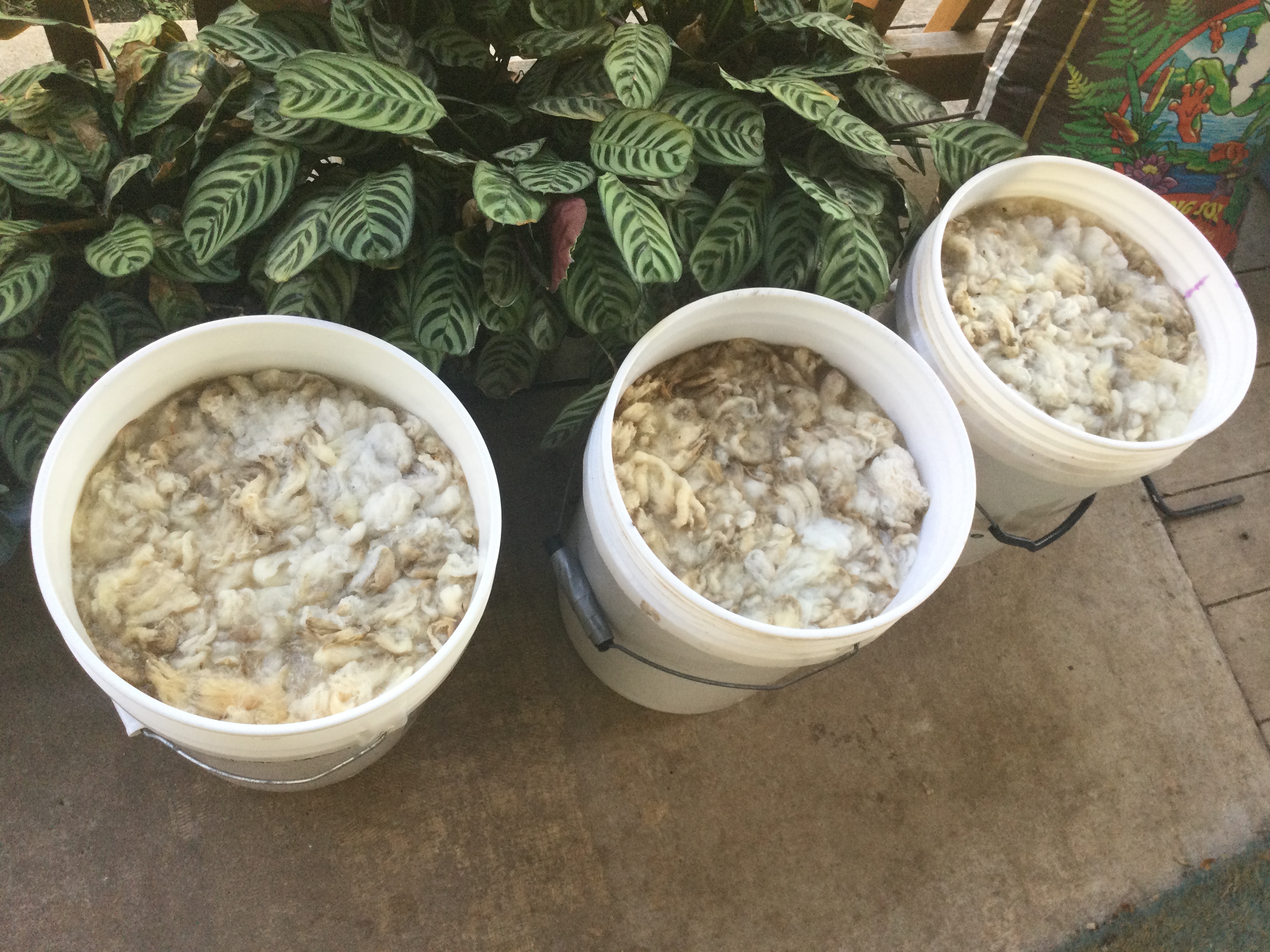
In the photo above you can see the raw fleece in its first soak. By using just the cold water the natural soap on the sheep’s fleece starts the cleaning process. The wool should be soaked for a minimum of 12 hours. Since we had several rainy days in a row, I let mine soak for almost a week. Luckily this isn’t an exact science.
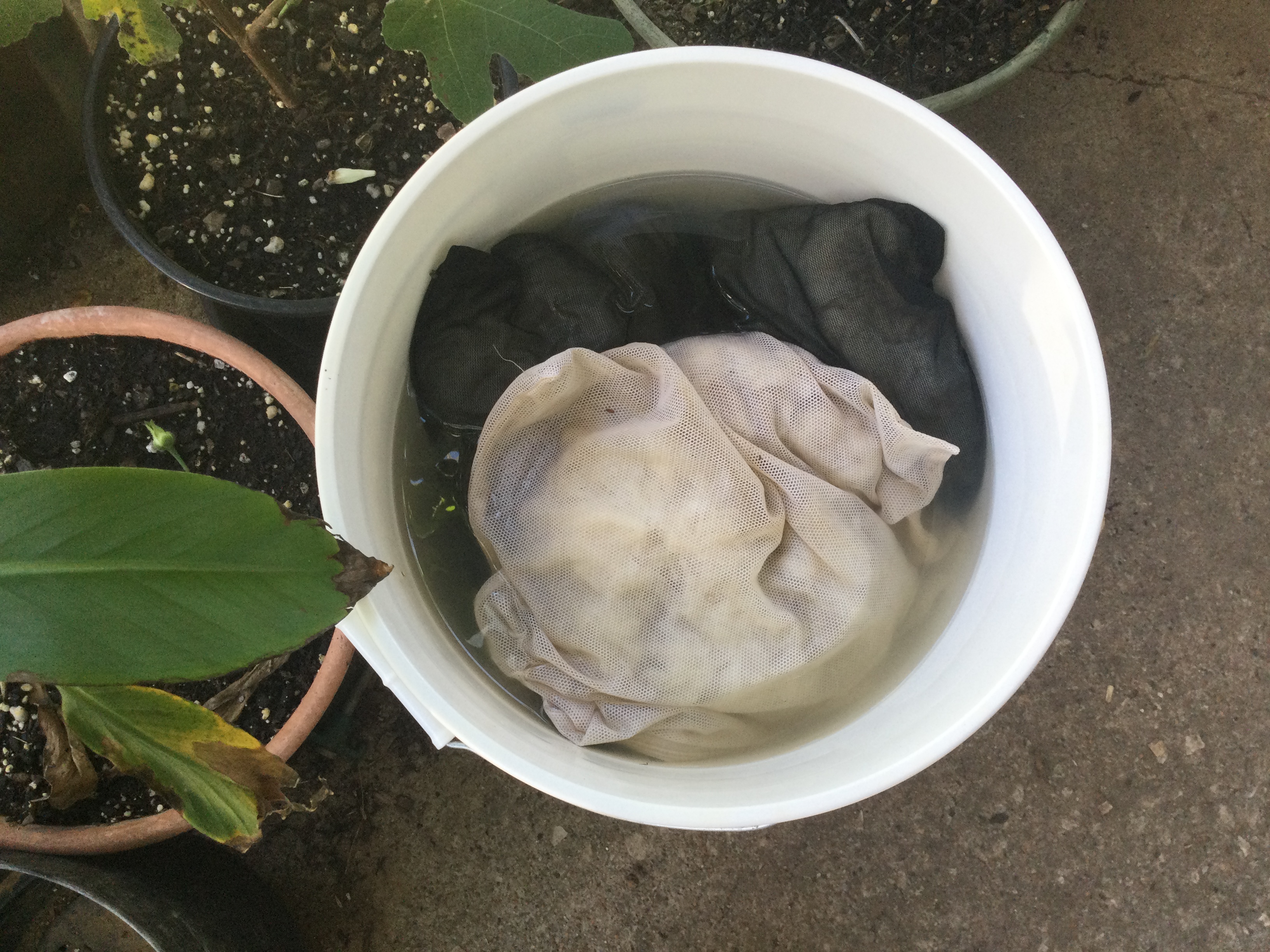
Now in this photo above you can see the wool is getting a shorter second soak in mesh washing bags. I could have soaked my fleece in these bags with the first soak but I honestly forgot.
You don’t need the mesh bags, but they are handy to move the wet fleece from bucket to hot soapy water bath to spinning dryer with the fear of felting. Next time I will start with the bags so I don’t have to divide the wool while it is wet.
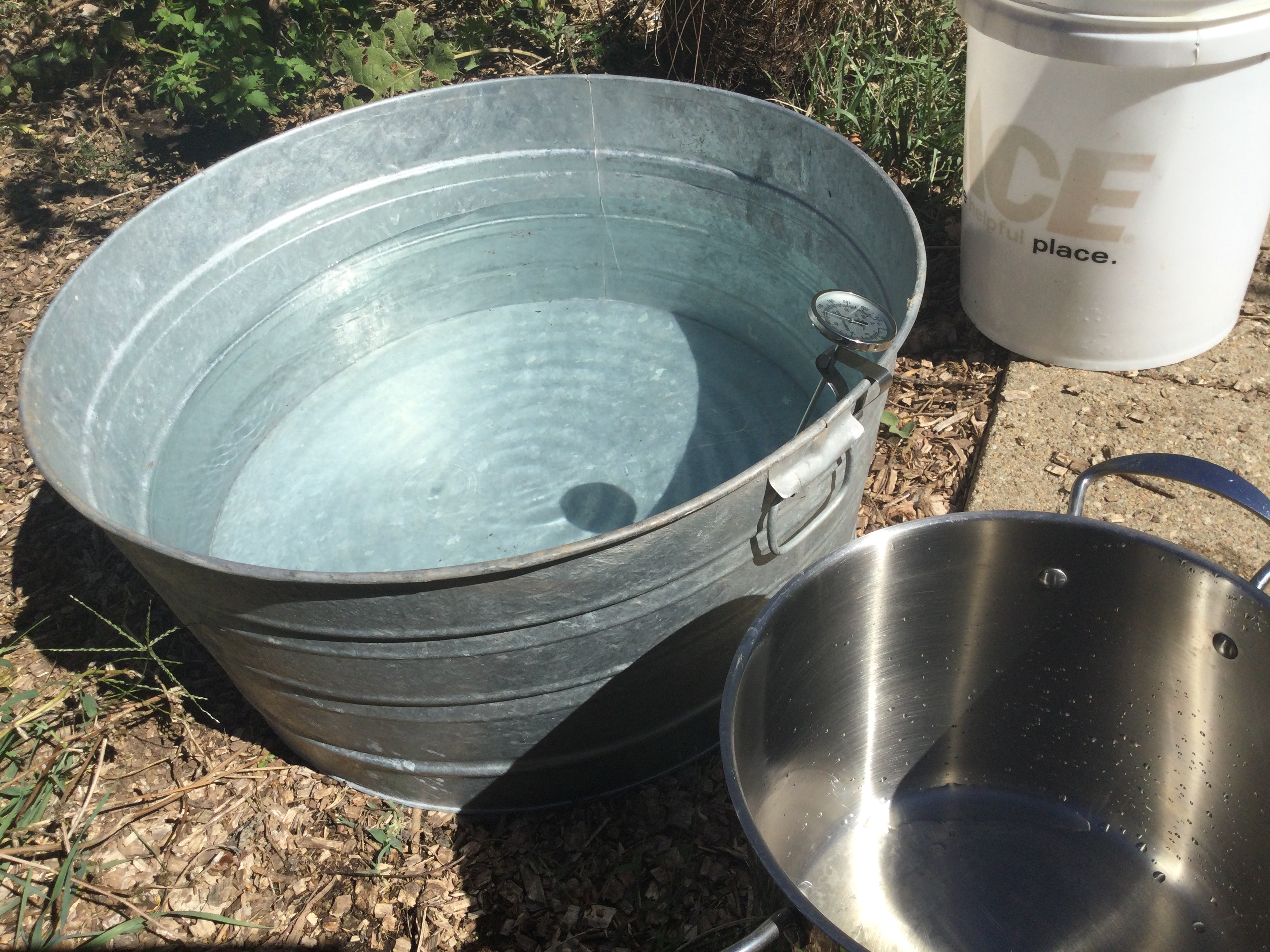
My large metal washtub ready for the fleece.

Power Scour for the job. This is a special soap just for washing raw wool.

I just emptied the washtub and am about to put the wool into the spinner. I soaked the wool for about 10 minutes in 130 degree F. You want it hot enough to remove the dirt and oils but to not ruin the fiber.
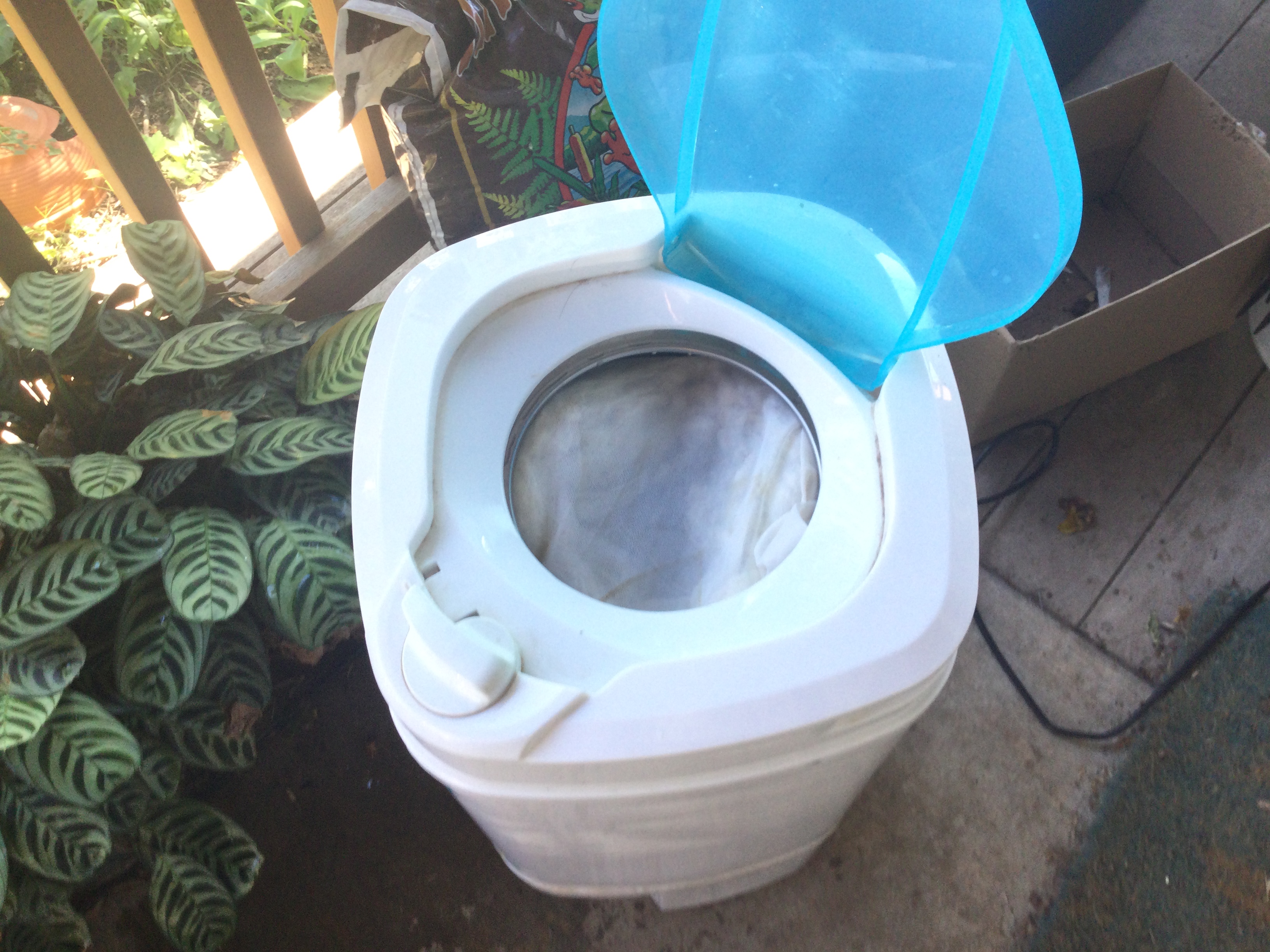

The spinner does an amazing job of spinning to remove almost all the water from the wool.
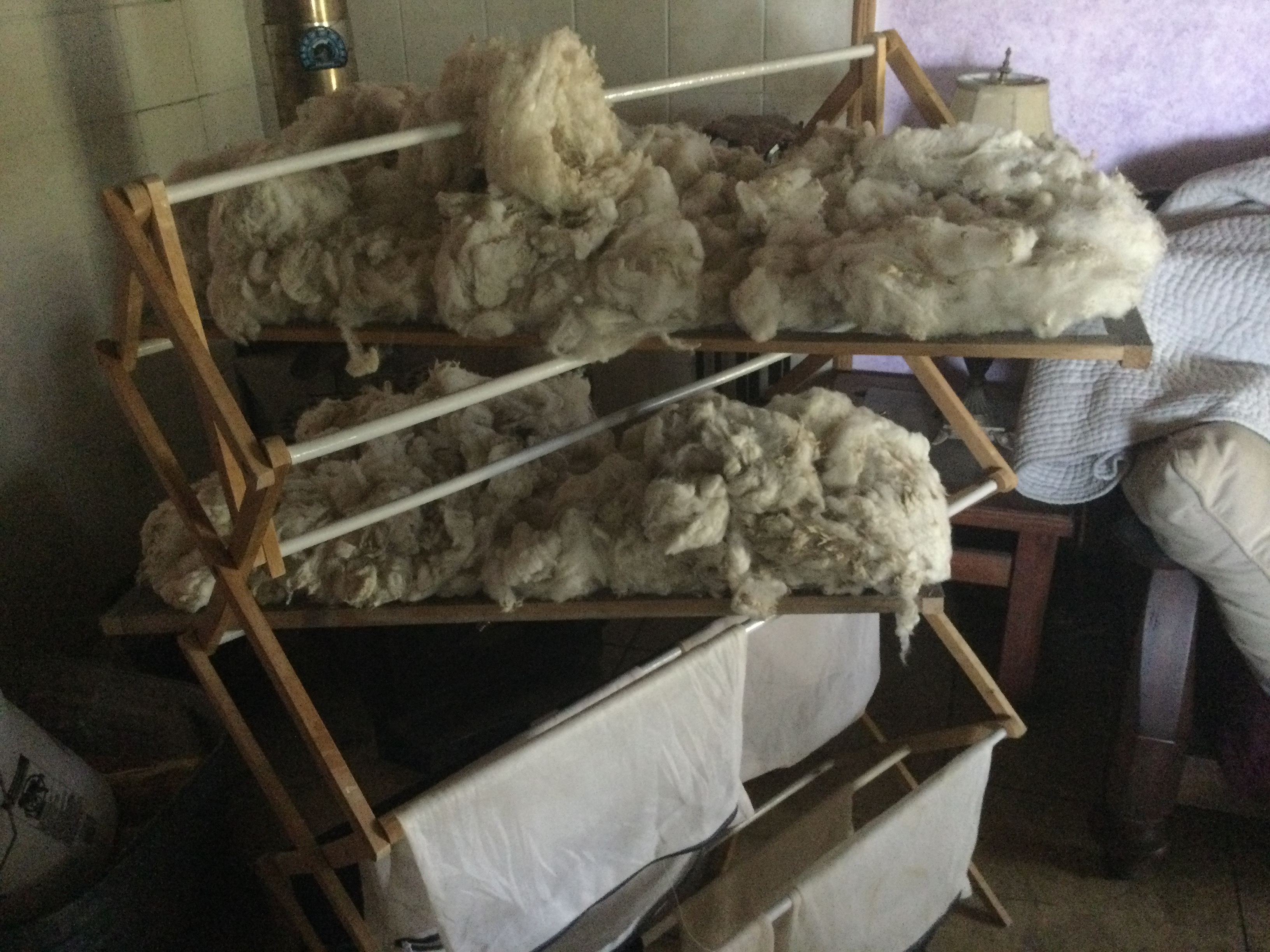
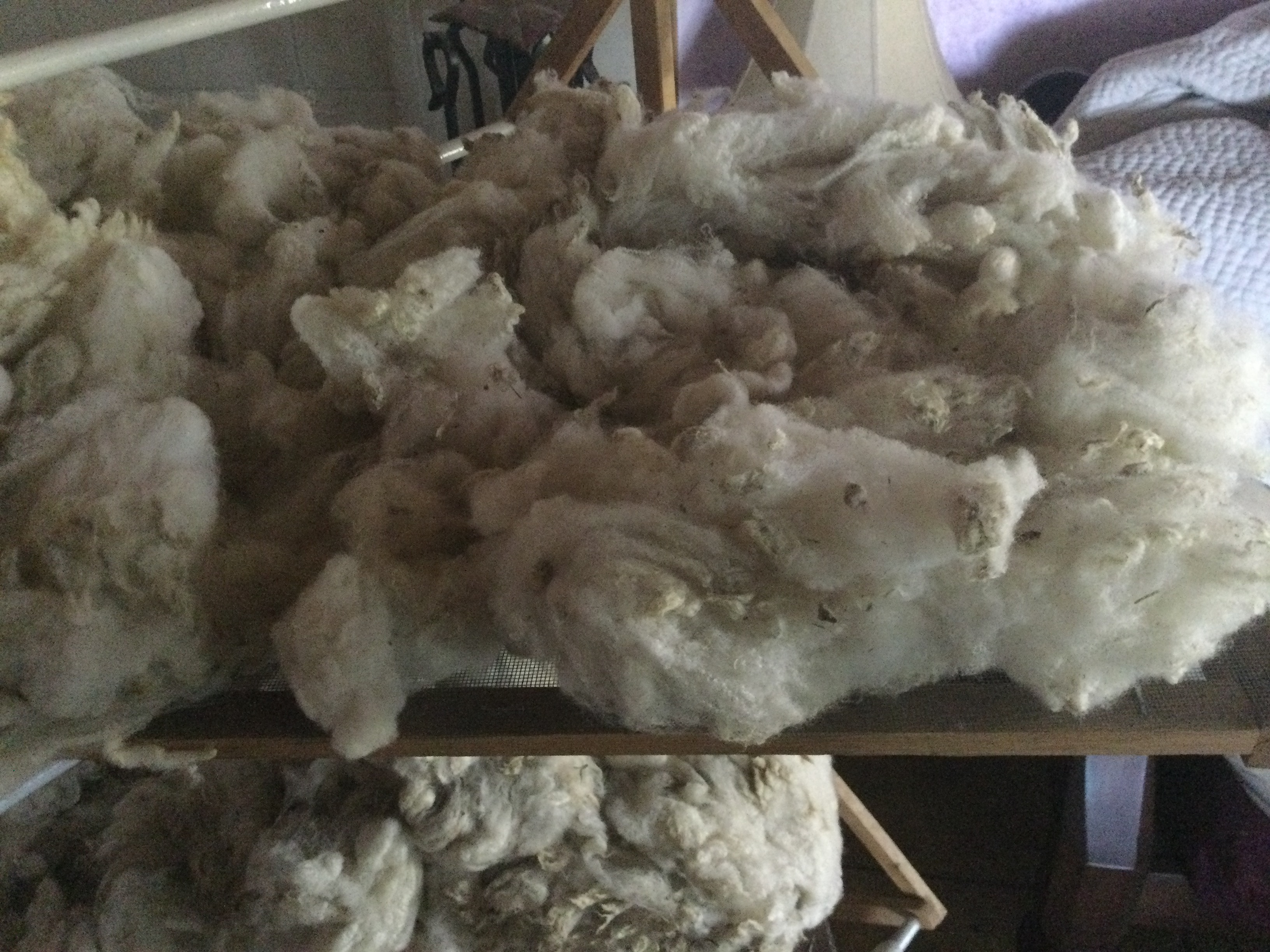
Now the wool is sitting on some screens to dry. I need a better set-up in the future but this works just fine for now.
After is is dry I will use a tool called a picker that will open up the locks of fiber. I will try to take a video of me using it in my next post so you can see how it works.
Until then, God bless and be well!
All photos taken by me.
Congratulations @yoginiofoz! You have completed the following achievement on the Hive blockchain and have been rewarded with new badge(s):
Your next target is to reach 8000 upvotes.
You can view your badges on your board and compare yourself to others in the Ranking
If you no longer want to receive notifications, reply to this comment with the word
STOPCheck out the last post from @hivebuzz:
Support the HiveBuzz project. Vote for our proposal!
Do you happen to know what the Power Scour is made of? It says detergent, so I wonder if it wasn't available could you just use dish soap, or laundry detergent? Would Woolite work?
Thanks!
There’s a book entitled “The Art of Washing Wool, Mohair, and Alpaca” by Mary Egbert that might interest you. I need to walk my dog and make some bread, so I will give you a better answer later tonight. The short answer would to not use laundry detergent if it has enzymes in them. Those enzymes are great for removing dirt off of plant fiber fabrics like cotton but will literally eat at the animal fibers in your sweater or in this case raw fleece.
Okay @valued-customer, it looks the the real answer to your question is “it depends.” Let me put together a post that will help answer your question fully.
My question back to you: Do you have a breed in mind of fleece you want to process?
Thanks for your interest and question!
Omg, you have done a great work @yoginiofoz I never happen to know that anyone could process their wool by themselves, hope its not a difficult thing to do and do you get to dye the wool before knitting, I will like to see the processes.
Hi Monica! None of the processes are especially hard except maybe shearing the sheep. :-) It does take time and some knowledge and probably good note taking. My want is to practice this method more so that I can feel confident to teach others where I live. Thanks for your comment, my dear. It is much appreciated.
This is so interesting!! I am really looking forward to see how you keep going in the process until youll have the yarn:) Are you gonna knit with it? (Oke maybe I am to impatient haha I guess first the yarn has to be made) Anyway I am glad you are sharing this process, so I guess all my questions will be answered in the end:) Just one more for now, do you have sheep, or where would you get the raw wool from?
Not sure what the final product will be. I did take a class several years back that help with this process, so I will be going through my notes as we go along.
I don’t have any sheep yet but would like to have some in the near future. My first fleece purchases were from a local shepherdess but she is in her 70s now and only has two sheep in her flock. You can buy raw wool on-line from Etsy or Facebook marketplace. Sometimes you can search on those sights and the seller may have their own website where it is a little cheaper. There is also Craig’s List, again on-line. If you cannot see the fleece it is a gamble whether or not it is worth the price. Cheap wool is just that, cheap wool. Unless you are stuffing something it isn’t worth the money or effort. There are fiber festivals all over the US where you can meet the shepherds and shepherdesses, see some of their flock if they are showing for competitions, and you can see their fleeces for sale in person.
I hope that answers your questions. Thanks for your comment.
Thats awesome!! Hmm yes I guess there must be a lot of different qualities... would you also dye the wool or the yarn?
anyways I am very excited to see how youll proceed:)
I also remember once I walked over a field where there used to be sheep and there was quite a lot of wool left on the gras, I would have liked to but didnt collect it, because I didnt really know what to do with it or how to wash it etc.. (now I know more:)
Yeah, that wool might have been what is categorized as “hair” sheep. It’s bred for meat and you don’t need to shear them because they just shed. That doesn’t mean you cannot do something with it but spinners probably won’t touch it. As you can see the steps are many towards a skein of yarn and you want the highest quality to start.
Crazy I never thought of that, but makes a lot of sense now that you say so..
thanks:)
Every day we learn something new, thank you very much for sharing.
Yes please keep us updated on the process, it’s so nice to see how the wool yarn is actually made. Do you have your own sheep or where do you get your fleece?
Edit: just read the other comments and found the answer 😁
Dear @yoginiofoz,
May I ask you to review and support the Dev Marketing Proposal (https://peakd.com/me/proposals/232) we presented on Conference Day 1 at HiveFest?
The campaign aims to onboard new application developers to grow our ecosystem. If you missed the presentation, you can watch it on YouTube.
You cast your vote for the proposal on Peakd, Ecency, or using HiveSigner.
Thank you!